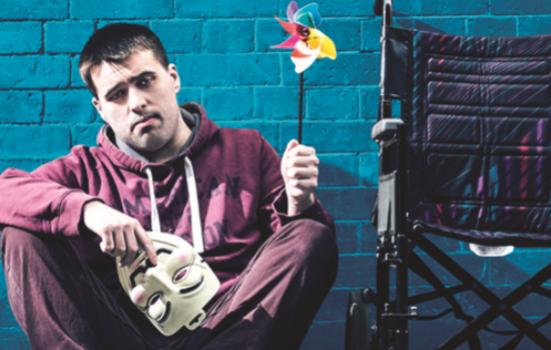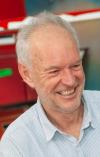Angered about how few young people with learning disabilities are involved in the arts, Richard Hayhow urges the sector to open its eyes to the talent and creativity out there.

I’d like to shock you with a statistic: in Birmingham alone there are 7,000 young people with learning disabilities (YPWLD), but only about 5% of them receive any kind of arts provision outside school. Extrapolate that figure to the West Midlands, and then to the whole of England and beyond.
It’s clear that this significant, but generally invisible, group of people aren’t getting the kind of arts provision that they deserve. But more than this, we, the arts community, are missing out on a great pool of creativity and talent.
The arts sector needs to work with people with learning disabilities not because of a box-ticking access agenda, but because this work inspires us all
At our recent conference called Is that all there is? we looked at some of the key issues preventing the sector from including more YPWLD in its work. Our sister event The CanCanCan Festival put solo performers with learning disabilities centre stage at Birmingham Hippodrome’s Patrick Centre.
Over two days we saw presentations by YPWLD, from professional artists such as the Stopgap Dance Company and Access All Areas, right through to school ensembles. We heard about the work that established arts organisations, such as the CBSO and Birmingham Hippodrome, are doing in this area, and enjoyed solo performances by young emerging artists from across the West Midlands. We talked honestly and frankly about what we as a sector need to do better.
Our aim was to inspire real and genuine change: to generate a movement of people committed to opening up access for YPWLD right across the arts. What did we learn? A few major themes presented themselves.
YPWLD are part of the creative case for diversity
People with learning disabilities have a different approach to creativity – Cian Binchy’s The Misfit Analysis was dubbed “defiantly different” by one reviewer – and they can contribute greatly to the artistic and creative work of our organisations.
This is at the heart of the creative case for diversity, and yet people with learning disabilities are not usually included in this debate. They desperately need to be. The arts sector needs to work with people with learning disabilities not because of a box-ticking access agenda, but because this work inspires us all. It’s fundamental to the way we create art.
Opportunities are sometimes anything but
Actor Cian Binchy worked unpaid as an autism advisor for The Curious Incident of the Dog in the Night-Time, but there was no opportunity for him to be part of the production itself. Access All Areas recently received four requests to provide learning-disabled actors, but the auditions were prohibitively short notice and there was no access budget. Young learning-disabled actor Rishard Beckett was included as a panellist in a diversity conference for Channel 4, but only received his questions one working day before.
Again and again we find examples of well-meaning work that for various reasons can never reach its potential. To work effectively with YPWLD, we need to put aside proper time and budgets to respond effectively to their needs.
The bigger the organisation, the harder it is
Smaller organisations can generally be flexible and adaptable to the people they work with. But for larger organisations this isn’t so easy, and making the adaptations that are needed for YPWLD is a challenge.
Moreover, large organisations attracting a ‘mainstream’ audience may have to win over that audience. Take relaxed performances: they can feel ghettoised, hidden away from the regular performances for fear of scaring off the mainstream audience. Increasing the visibility of YPWLD in larger arts organisations is really about increasing their visibility in society as a whole.
We have to organise and think in new ways
There is a wide spectrum of learning disability, from high-achieving performers to those with profound and complex needs. So a one-size-fits-all approach simply won’t work.
Even the most advanced organisations in this field are in a process of trial and error, finding the need to lose their reliance on language and use non-verbal communication instead. Some are investing in ‘creative enablers’, professional support workers who meet a learning-disabled artist’s creative and practical needs. This also needs proper time and budgets to be done well.
Raising aspirations of YPWLD as creators
While there will always be a place for work done ‘with’ and ‘for’ YPWLD, we must shift the emphasis to work ‘by’ YPWLD – providing the conditions for people with learning disabilities to be the creators of their own artistic response. This is equally true for people with complex and profound needs as for those at the higher-functioning end of the spectrum, although the end-results may look very different. Only by raising aspirations can we create the artists of the future.
We are under no illusion that genuinely opening up access to YPWLD will take time and determination, but after 30 years of working in this sector I sense that we are on the edge of a sea change. It’s up to all of us to make the shift. So I challenge you to look at your provision for YPWLD and ask yourself: Is that all there is?
Richard Hayhow is Director of Open Theatre Company.
www.opentheatre.co.uk




